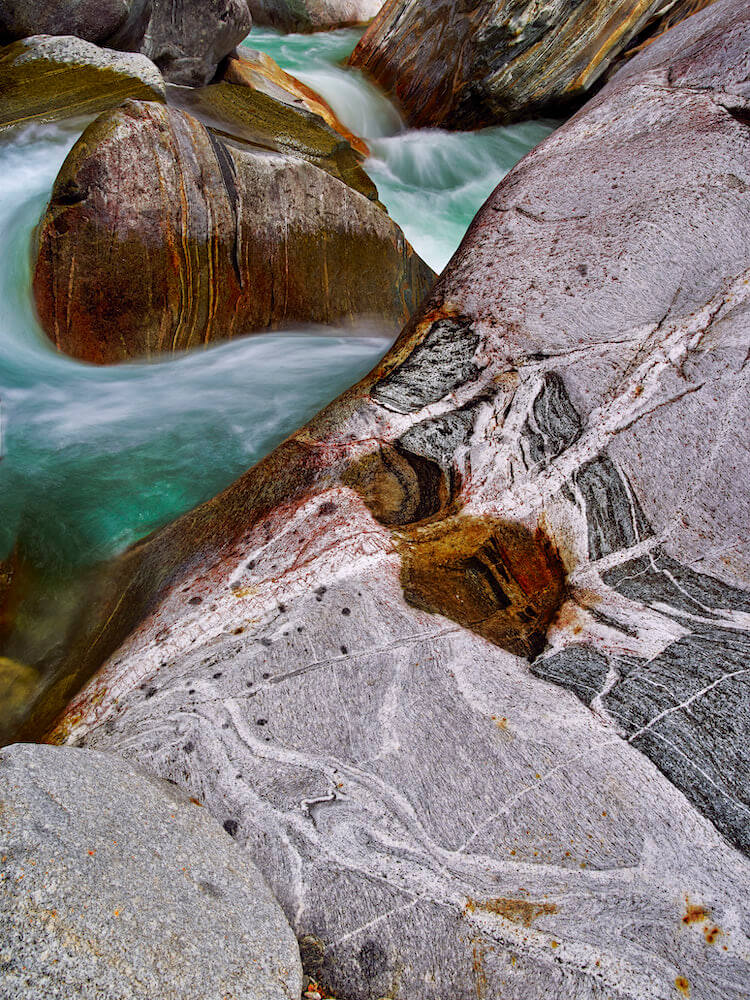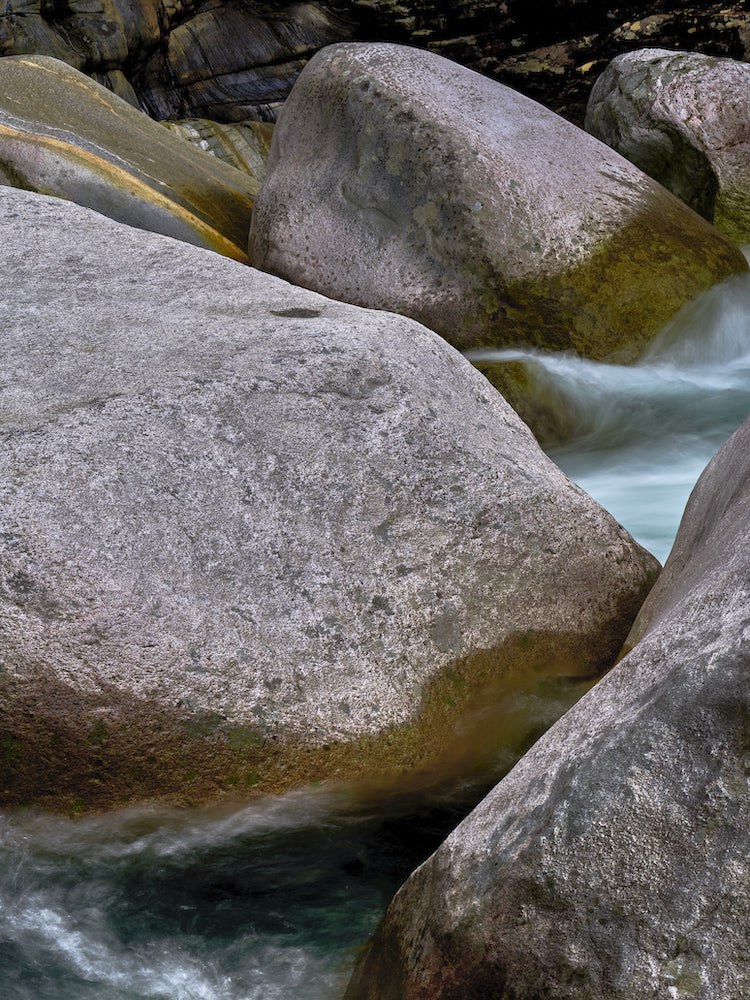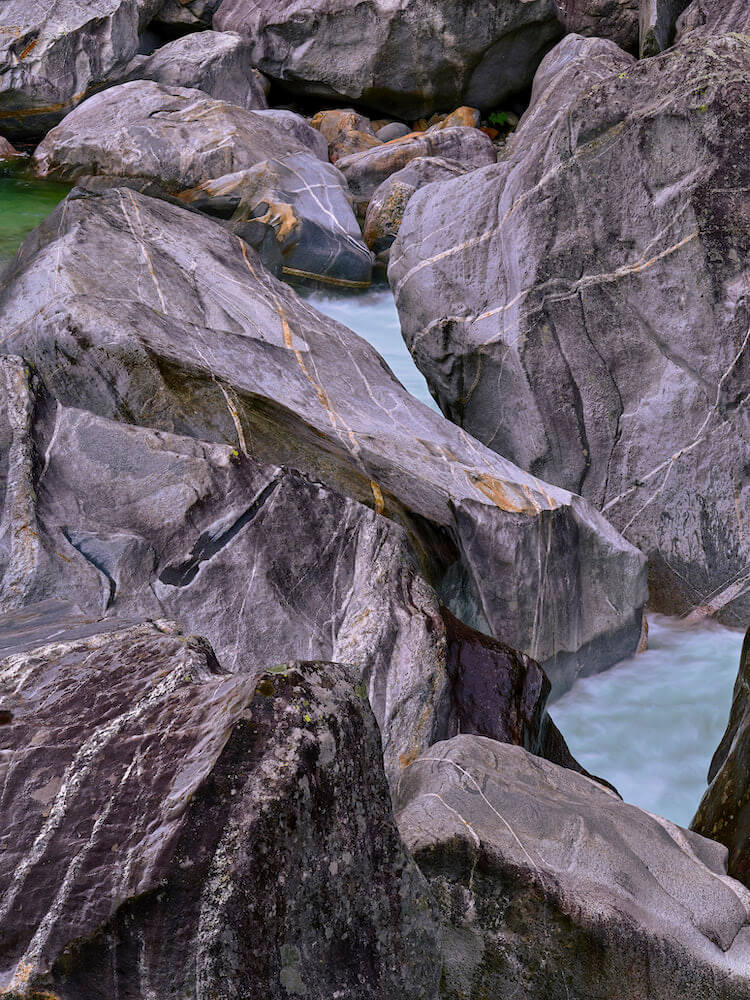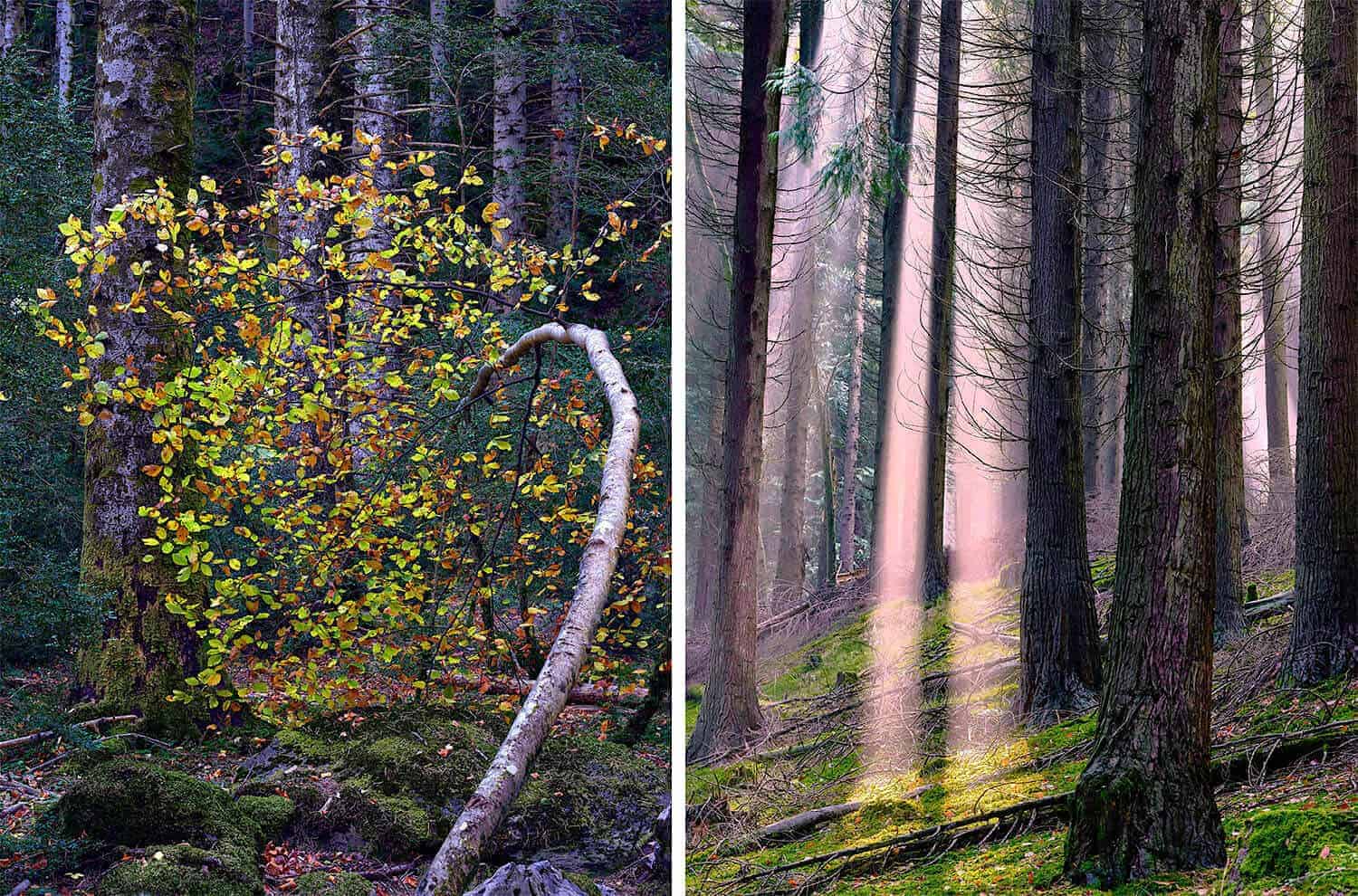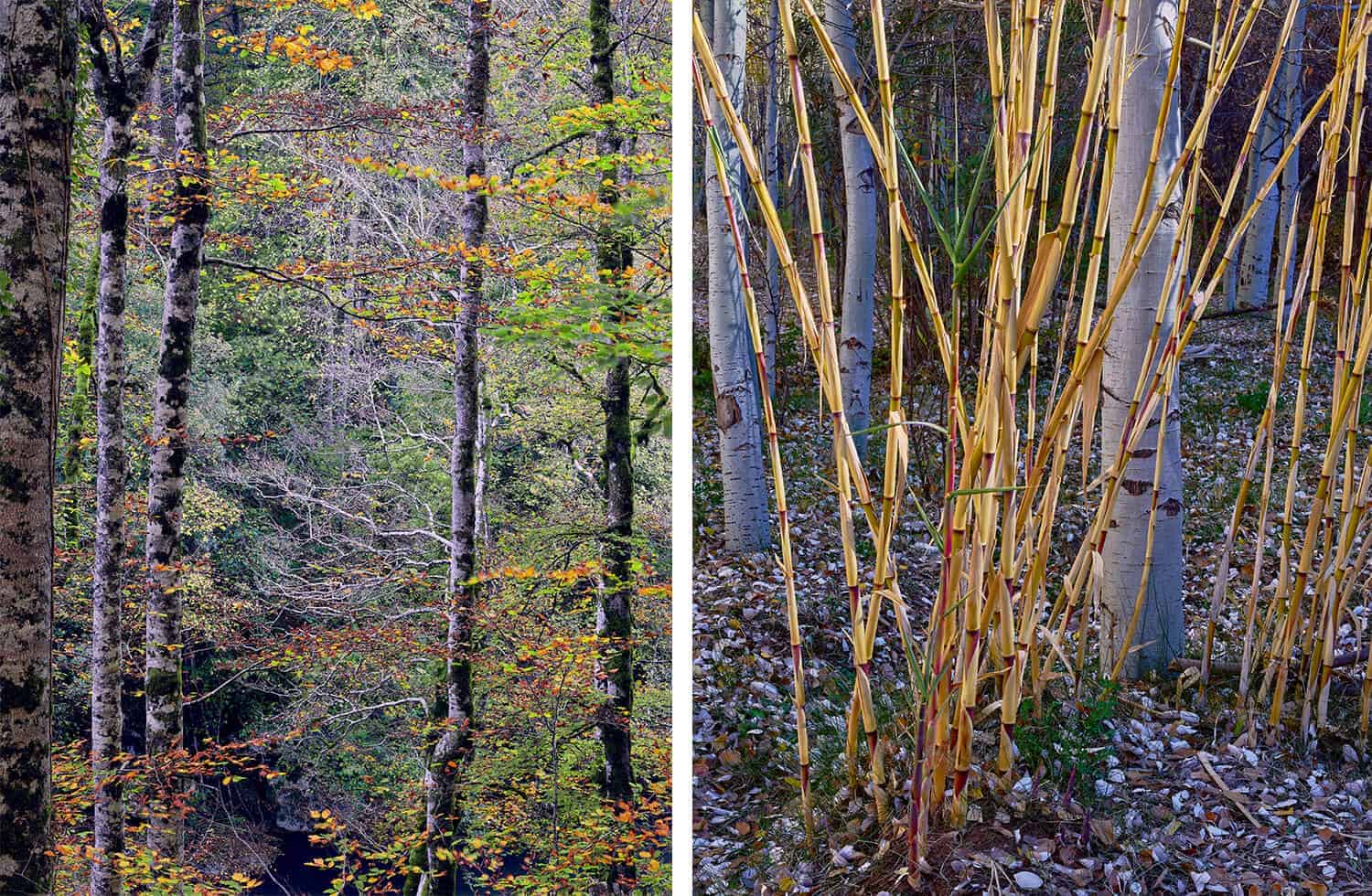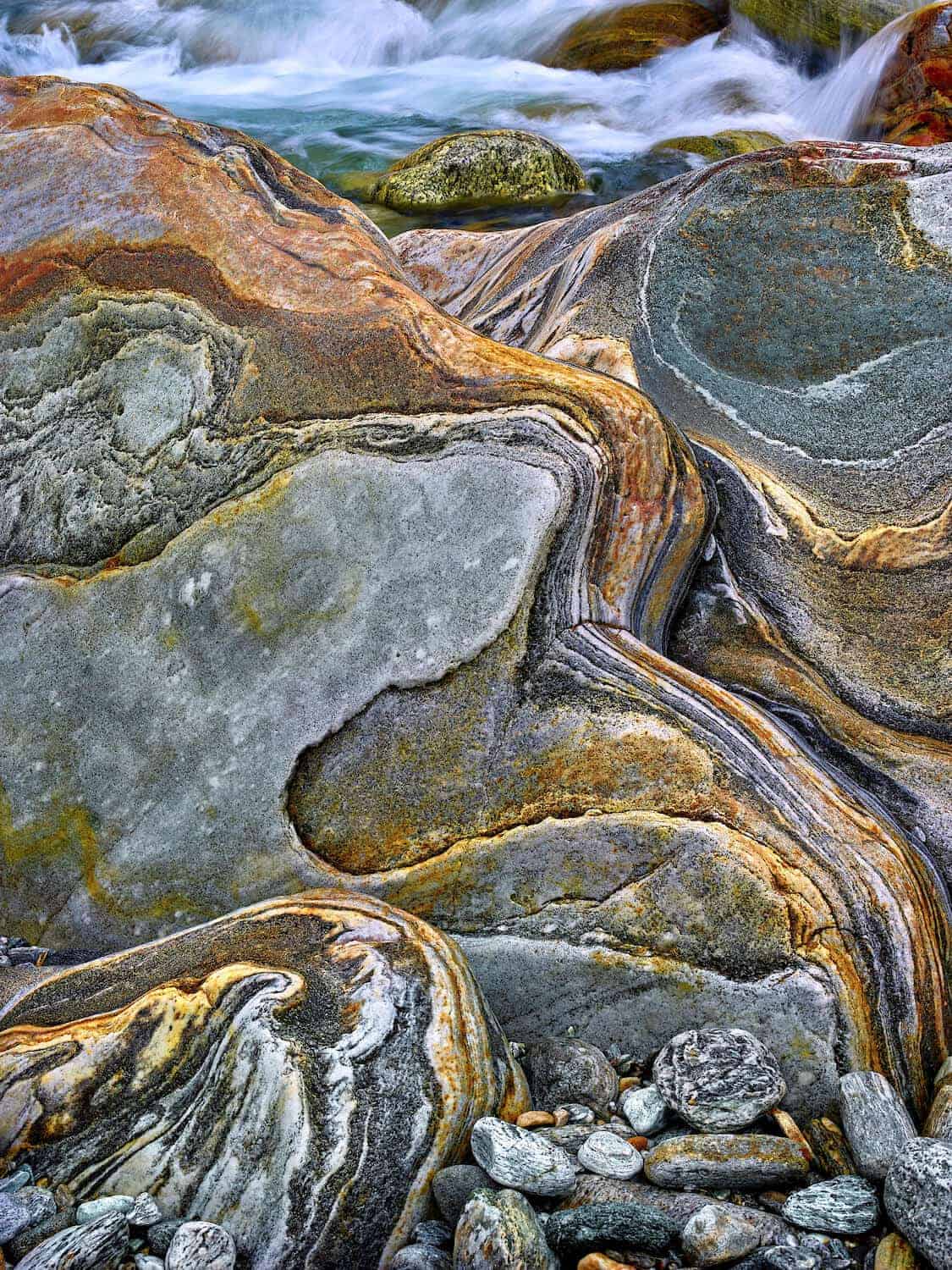In landscapes, no one set of weather conditions works for all scenes and locations. Photographers will often baulk at sunny days and superficially this is true; the direct sun can wreak havoc, but the direct sun can also help form a powerful aesthetic. Firstly, let’s look at the more desired, controlled landscape lighting.
The locations I visited in 2018 (Switzerland and Spain) both made use of different qualities of light. The Swiss rocks series was made on days with a mixture of bright direct sun and moving clouds. I used the moment when the edges of each cloud-first passed over the sun, leaving a bright but diffuse light.
Photographing this way, both allowed for light penetration of recesses and added a softness to the scene. Clouds providing a diffuser were used in tandem with a polarising filter which also helped to control the highlights and reflections from rocks. What would have been useful is a solar filter for my own eyes to make safe judgements on sun and cloud movements.


